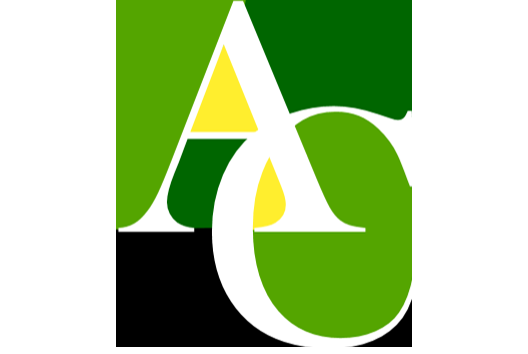Painting the exterior of a commercial or industrial property in Boston will elevate its curb appeal and, at the same time, tackle issues of safety, compliance, and durability. Boston’s changing weather, dense neighborhoods, and strict local codes create a unique landscape where proper planning is essential. Whether you're maintaining a warehouse, biotech lab, or retail facility, this guide outlines safe, effective exterior painting safety guidelines Boston businesses should practice.
Know the Local Exterior Painting Standards Before You Begin
Before lifting a paintbrush, it’s essential to understand Boston's regulatory environment. Commercial exterior painting must meet OSHA, EPA, Massachusetts, and city-specific requirements. These cover everything from scaffolding and safety equipment to how to manage airborne debris and chemicals near public areas.
For buildings near walkways or in historic neighborhoods, additional containment measures and permit approvals may apply. Boston’s Inspectional Services Department should be your first stop for confirming project requirements. Staying compliant keeps your project on schedule and minimizes liability.
Boston Weather: The Silent Influencer on Paint Safety and Scheduling
Boston’s climate plays a critical role in project timing and worker safety. Humidity, wind, snow, and sudden temperature swings can interfere with surface prep and paint adhesion. It also raises safety concerns for exterior painters working on ladders or lifts.
To reduce risks:
- Schedule painting during dry, temperate months
- Monitor daily weather forecasts
- Use slip-resistant drop cloths and walkways
- Avoid working on icy or rain-soaked surfaces
Timing your project wisely helps avoid costly do-overs and keeps everyone safe on site.
Tailored Paint Safety for Industry-Specific Needs
Each type of property brings its own safety priorities. Biotech labs require strict ventilation controls. Warehouses might need dust mitigation plans. Food service and retail facilities must meet sanitation and air quality rules.
At Cole Painting, our project leads assess each location for:
- Chemical sensitivity
- Equipment or merchandise exposure
- Required air filtration or sealing procedures
- Occupant and pedestrian safety
This customized approach ensures your facility’s operations stay safe and uninterrupted during our exterior painting services.
Tips to Prepare Surfaces Safely
Surface prep is where great results begin. It also presents some of the biggest safety challenges, especially when dealing with older structures that may contain lead-based paint.
Lead Paint Compliance
For buildings constructed before 1978, testing for lead paint is not optional. Certified professionals use XRF analyzers or EPA-approved kits to confirm its presence. If lead is detected, you must follow Massachusetts and federal rules for:
- Containment using plastic sheeting and sealed entry points
- Protective gear for all workers
- Specialized tools like HEPA vacuums and negative air machines
Skipping these steps puts people and the environment at risk, and it opens your business to regulatory fines.
Best Practices for Paint Removal
Once hazards are assessed, the following techniques ensure safer, cleaner prep work:
- Wet scraping to limit dust
- Low-dust sanding with vacuum attachments
- Environmentally compliant chemical stripping (when required)
These methods reduce debris, control contamination, and create a better bond for new paint, especially in Boston’s harsh winters and humid summers.
Keep High-Traffic Areas Functional
Painting near entrances, walkways, or operational zones requires more than tape and cones. Maintaining access and cleanliness is key to keeping your business running smoothly.
Tips and guidelines for managing disruption:
- Schedule around off-peak hours or slower seasons
- Use portable fencing and OSHA-compliant signage
- Notify staff and patrons about restricted zones and rerouted access points
- Cover surfaces and install temporary paths to shield against spills and dust
If your business runs 24/7, phased painting (tackling sections in sequence) allows you to stay open with minimal interference.
Safe Equipment Usage and Crew Conduct
Ladders, lifts, and scaffolding require daily inspection and trained operators. All workers and painters should use:
- Fall protection systems where needed
- Hard hats, gloves, eye protection, and respirators (when working with solvents or near lead)
- Proper footwear with grip for uneven or slick ground
Designated safety supervisors and checklists for each day’s activities help prevent injuries and maintain OSHA compliance.
Clean-Up That Leaves No Trace
Once painting wraps up, the site must be returned to full function without lingering hazards. Effective cleanup includes:
- HEPA vacuuming dust and particles
- Removing all signage and barriers
- Safely disposing of paint containers and materials
- Inspecting the site for any missed residue or access issues
For facilities with HVAC systems, filters may also need replacing to maintain air quality.
Common Mistakes to Avoid
Some shortcuts can cost you more in the long run. Avoid:
- Starting work without confirming permit status
- Ignoring weather conditions
- Overlooking lead tests in older buildings
- Failing to communicate with occupants or clients
- Using the wrong paint for the building’s surface or climate
Choosing a partner familiar with Boston’s codes and conditions helps you avoid costly setbacks.
Next Steps for Safe, Compliant Commercial Painting in Boston
Safety, compliance, and craftsmanship go hand-in-hand when painting commercial exteriors in Boston. With careful preparation and the right professionals, you can improve your property’s appearance without compromising day-to-day operations or workplace safety.
Ready to get started? Contact Arthur Cole Painting for a customized project walkthrough. We’ll help you assess safety requirements, plan around weather and business hours, and create a clean, professional finish that stands up to Boston’s climate.
